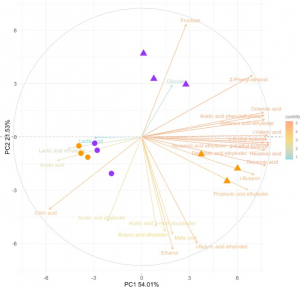
Javier Ruiz, Miguel de Celis, MarÃa de Toro, Ana Mendes-Ferreira, Doris Rauhut, Antonio Santos, Ignacio Belda
Doi: 10.1016/j.foodres.2020.109663
Cited as: Ruiz J, de Celis M, de Toro M, Mendes-Ferreira A, Rauhut D, Santos A, Belda I (2020) Phenotypic and transcriptional analysis of Saccharomyces cerevisiae during wine fermentation in response to nitrogen nutrition and co-inoculation with Torulaspora delbrueckii. Food Research International 137, 109663; https://doi.org/10.1016/j.foodres.2020.109663.



